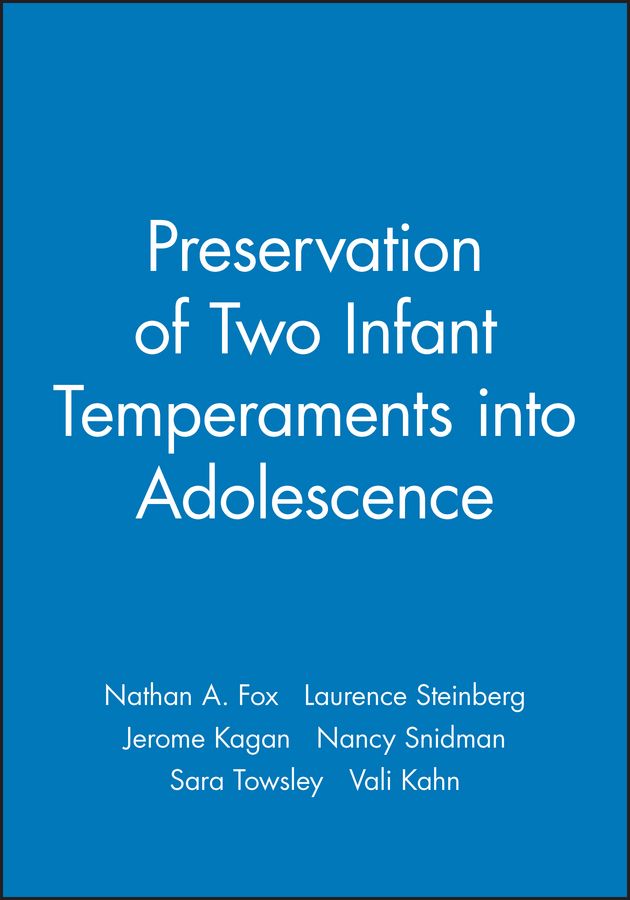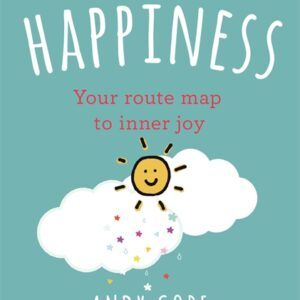Temperament has been a central element of the on-going effort<br /> to describe the distinctiveness of persons at every stage of<br /> development. Many researchers have examined the relations of<br /> temperament to emotions, behavior, and adjustment generally.<br /> Fewer studies have focused primarily on the nature and structure<br /> of temperament, however, and even fewer have examined<br /> the developmental course of temperament. This Monograph<br /> reports a significant exception. The authors undertook theoretically<br /> relevant behavioral, biological, and self-report assessments<br /> of a sample of 14-to-17 year olds who had been classified into<br /> one of four temperamental groups at 4 months of age. Infant<br /> temperamental categories were based on observed behavior<br /> to a battery of unfamiliar stimuli. The infants classified as high<br /> reactive (20 percent of the sample) displayed vigorous motor<br /> activity and frequent crying. Those classified as low reactive (40<br /> percent) displayed minimal motor activity and crying. About 25<br /> percent of the infants, called distressed, showed minimal motor<br /> activity but cried frequently, and 10 percent, characterized<br /> by vigorous motoricity but little crying, were called aroused.<br /> Previous evaluations of these children at 14 and 21 months,<br /> and 4, 7, and 11 years had revealed that those children initially<br /> classified as high reactive were most likely to be avoidant of<br /> unfamiliar events at the early ages and emotionally subdued,<br /> cautious, and wary of new situations at the later ages. By<br /> contrast, initially low-reactive children had been the least<br /> avoidant of unfamiliarity in the second year and most emotionally<br /> spontaneous and sociable at the later ages. At age 11<br /> years, assessments also had revealed that initially high-reactive<br /> children were more likely than the low-reactive participants to<br /> display right hemisphere activation in the EEG, a larger evoked<br /> potential from the inferior colliculus, larger event related<br /> waveforms to discrepant scenes, and greater sympathetic tone<br /> in the cardiovascular system. In the follow-up of these individuals<br /> reported here, adolescents (14–17 years of age) who had<br /> been classified as high reactive in infancy were more likely than<br /> initially low reactive participants to display sympathetic tone<br /> in the cardiovascular system, to combine a fast latency with a<br /> large magnitude of the evoked potential from the inferior colliculus,<br /> and to show shallower habituation of the event-related<br /> potential to discrepant visual events. Moreover, compared to<br /> their low-reactive agemates, initially high reactive adolescents<br /> more often reported being subdued in unfamiliar situations,<br /> experiencing a dour mood and anxiety over the future, and being<br /> religious. An important finding is that behavior and biology were<br /> more clearly dissociated in adolescence than at earlier ages.<br /> However, infant temperamental category at 4 months remained<br /> a powerful predictor of behavior in adolescence, suggesting that<br /> the features that characterize the two temperamental biases by<br /> initially high- and low-reactive are not completely malleable to<br /> the profound effects of brain growth and experience.
Preservation of Two Infant Temperaments into Adolescence
₹2,519.00
This book is currently not in stock. You are pre-ordering this book.




